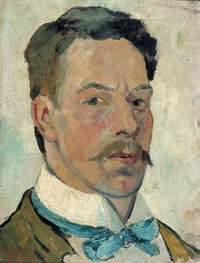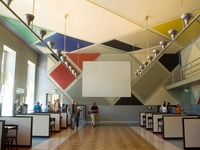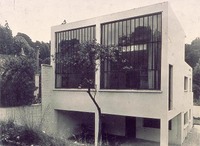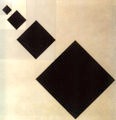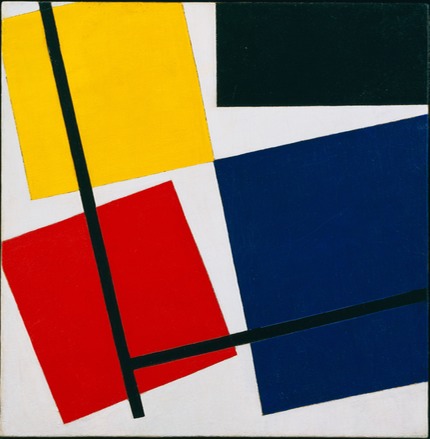
In the Municipal Museum de Lakenhal in Leyden (The Netherlands) I saw an exhibition - in cooperation with Tate Modern in London- on the life and work of Theo van Doesburg and his avant garde contemporaries. Theo van Doesburg lived in the era around World War I . The time of the destruction of millions of lifes but also the time of the destruction of the outdated 19th century ideas and values. On the ruines of World War I people were searching for new and more enlightened values to rebuild the society. In all areas of life this development took place, most notably in politics but also in art. The Dutch artist Theo van Doesburg was an important member of this avant garde. He was a painter, designer, writer, publisher, sculptor and architect. He is the founder of the artistic movement The Style (De Stijl).
Van Doesburg was a versatile artist who tried to unify all forms of art to one universal vision. Creative, dominant and restless he set foot on new paths, concluded coalitions with other members of the avant garde all over Europe, organized and produced an incessant stream of happenings, articles and art objects but many of his friendships and coalitions ended up with a row. The painter Piet Mondriaan with whom he had a close connection was in this respect for a long time one of the few exceptions. But during their stay in Paris they seperated and went into different directions. For van Doesburg even the rows were a source of inspiration for something new. In the Museum de Lakenhal you can see many works of van Doesburg together with works of important avant garde contemporaries like Piet Mondriaan, Hans Richter, Ferdinand Leger, Bart van der Leck, Kurt Schwitters, Walter Dexel e.a. The exhibition is organized in such a way that the modernist works of van Doesburg and others are shown amidst the predominantly classical collection of the museum, which emphasizes the contrast with the past.
When you missed the exhibition in Leiden you can see it from january 3 in Tate Modern in London.
